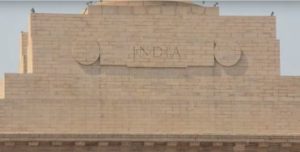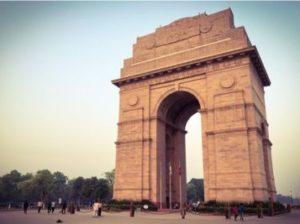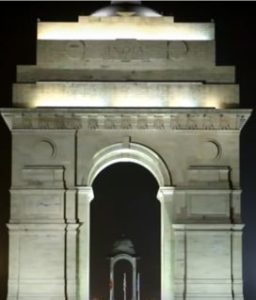Interesting and fun facts about India Gate | Historical Facts of India Gate

- By
- Aparna Patel
- |
- 1 Sep, 2019
- |
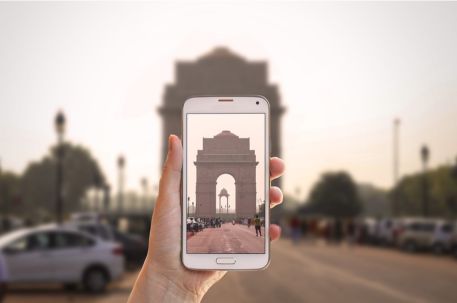
India Gate is one of the most visited tourist destinations among all major Delhi attractions. India Gate is located, in the capital city of Delhi, Delhi. This place is at the eastern end of the formal main road, about 2.3 km from Rashtrapati Bhavan. Rajpath was first known as Kingsway. This is a famous national monument of India which is also known as All India War Memorial. This gate is dedicated, to honoring the soldiers of the undivided Indian Army, who died during World War I between 1914 and 1921. This type of war memorial offers tribute, to the martyred soldiers and people get to know about them. And it is often compared to Arc de Triumph in France, Gateway of India in Mumbai and Arch of Constantine in Rome. On January 26, the Republic Day Parade is held every year, at India Gate and it is famous. This monument is a huge 42-meter high gate that was designed by the famous architect Sir Edward Lutyens. This monument is, built on the sun. In 1931, the British rulers had commemorated 80000 thousand Indian soldiers who were martyred, in the First World War and Afghan War. In this article, you will find the history, design, and interesting facts related to the India Gate of India Gate. Also, you will find answers to all the questions related to this tourist spot through our article.
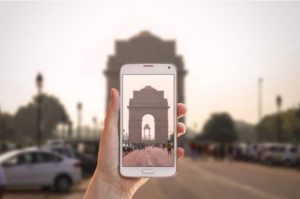
Table of Contents
History of India Gate
The real name of India Gate was, kept in the All India War Memorial. Formerly known as All India War Memorial, this monument was built by the British rulers, in memory of the 82,000 Indian soldiers who, for the British government, were the first World War (1914-1918) and the third Anglo-Afghan war 1919) gave his life. This was done in 1917 as part, of the Imperial War Graves Commission (IWGC) launched by the British Imperial Mandate. On February 10, 1921, at 4:30 pm, on the visit of Duke of Connaught, the foundation stone was, placed along with members of the Indian Army and the Imperial Service Tops at a military ceremony. Commander-in-chief, Frédéric Thécieger, and India’s first Viceroy Wisconsin Chelmsford were also present there. Finally, the memorial was inaugurated by Lord Virender of Lord Irwin on February 12, 1931. It was dedicated, to all the soldiers who had lived their lives during the war. On its walls, more than 70,000 Indian soldiers and 13300, British soldiers are engraved on the gate, this monument made of yellow and red sandstone is visible.
When India Gate was ready, a statue of George Pancham was engaged in front of it. Which was later, established in Coronation Park with other icons of the British Raj period. Now instead of the statue of Georges Pancham, only one umbrella has remained in the form of symbols. The structure was designed, by Edwin Lutyens. In 1971, during the Bangladesh Liberation War, small monuments and small works of black marble stones were made. This artwork is, also called Amar Jawan Jyoti because, since 1971, the tomb of the unarmed soldiers of India, has been made here. This building is, made of red stone which is standing on the platform of a huge structure.
On both sides of the arch, it is written ‘India’ on both sides. Its top is a shallow circular balloon shape, which was made to fill the burning oil on special occasions. For the martyrs of the Indian Forces who died in France and Flanders Mesopotamia, Persia, East Africa Gallipoli and elsewhere in the Near East and Far East, and whose names are also recorded in their sacred memory, and in the third Afghan War in India or in the north- There were dead on the western border. In the memory of the martyred soldiers, a cap of a soldier is placed here on a rifle, on whose four corners the ‘Amar Jawan Jyoti’ always keeps burning. There are names of thousands of martyrs on their walls. Above all is written in English. Due to its rich historical background and amazing architecture, India Gate has become one of the most popular picnic spots in the city.
Amazing, History, Famous Fun Facts About India Gate For Tourists and Kids
- India Gate is a war memorial. Rajpath, which is built, in New Delhi, was also called Kingsway in ancient times.
- The ceremony honored the 59th Shinde Rifles (Frontier Force), 3rd Separators and Minors, 34th Sikh Pioneers, Deccan Horse, 6th Jat Light Infantry, 39th Garhwal Rifles, 117th Marathas, and 5th Gorkha Rifles (Frontier Force) with Royal titles for their big competition.
- India Gate, situated in the middle of the city of Delhi, is 42 meters high and the name of India’s legendary soldiers is engraved on, the walls of India Gate. On that wall are the names of those soldiers who sacrificed their lives during the Afghan and World War I.
- This monument of Delhi is connected, to the main road of Delhi.
- The construction of India Gate started, in 1921 and it caught 10 years to build this memorial and in 1931 India Gate was ready. The monument is said to have been, constructed inspired by the Arc de Triomphe of Paris.
- India Gate of India was architected by Edwin Lutyens.
- There is also the legendary Amar Jawan Jyoti in India Gate, which is burning 24 × 7. This Amar Jawan Jyoti was made, for soldiers martyred in the 1971 Indo-Pak war. In 1972, on the occasion of Republic Day, India’s Prime Minister Indira Gandhi burnt it.
- Amar Jawan Jyoti Gate is made, of marble at the pilgrimage site. A rifle and soldier’s cap have also been, made over it.
- India’s President and Prime Minister treats India Gate as one of the famous pilgrim centers in the country.
- Everyone in India knows the importance of the India Gate.
- India’s water, air, and space, the three soldiers know the value of Jyoti.
- India Gate is considered to be the world’s highest global war heritage, which is visited by millions of Indians every day.
- The site is also a famous picnic spot due to the historical significance of India Gate and the lush green garden surrounding it.
- India Gate is famous for the Republic Day Parade to be caught on January 26.
- India Gate is one of the highest war memorials in India.
- The walls of India Gate are inscribed, with the names of Indian soldiers who died in the First World War and the Afghan Wars.
- Amar Jawan Jyoti was unveiled on 26 January 1972 by Prime Minister Indira Gandhi.
- It is customary for the President and the Prime Minister, as well as guests to give tribute to the Amar Jawan Jyoti on the occasion of state celebrations.
- India Gate is surrounded, by lush green gardens and surrounded by the clear waters of a lake.
- Delhi is a symbol of the heart of India which is dedicated by the martyrs of the country to sacrifice their lives for the country as India Gate. This monument is considered as the heritage of India and is, located on the Rajpath in New Delhi.
- It is, made from red sandstone and granite. On Republic Day (26 January), the President of India and other dignitaries, as well as all other top political leaders, pay tribute at India Gate every year.
- During the First World War and the Third Anglo-Afghan War, 82,000 soldiers of the British Indian Army lost their lives protecting the superiority of the mighty British Empire. India Gate was built to honor these soldiers. The names of all these soldiers, on the walls of the India Gate, are inscribed.
- When India became independent in 1947, India Gate was built, for the sacrifices of Indian soldiers of the British Army.
Read more article: Do you know these thing about cellular jail?
The early history of India Gate
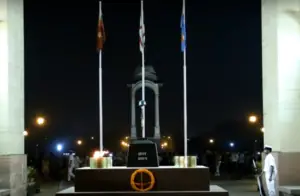
india gate
India Gate is, located in India, which is also called Akhil Bharatiya War Memorial. And this is also a part of the historical heritage Imperial War Grave Commission (IWGC). Which was established for the soldiers killed in World War I. Until the 1920s, Old Delhi Railway Station used to be the only railway station in the entire city. The Agra-Delhi railway line, at that time, the way of Lutyen’s Delhi and Kingsway, which has now been given the name of Rajpath in Hindi. The present India Gate passes through the construction site of the gate. Eventually, this railway line was transferred to Yamuna river. After this, when the route started in 1924, the construction of the memorial site could be started somewhere. Many great paths reach through the 42 meters high India Gate. Around the first India gate, a lot of traffic was crossing. But now it has been closed for overweight vehicles.
When the monument is published in the evening, a huge crowd, of people gathers around the India Gate and grasslands on either side of Rajpath. The hexagonal area of India Gate located in the diameter of 625 meters spread over an area of 306,000 square meters. The umbrella placed in front of India Gate is still, the same. Under that umbrella, there was a magnificent statue of Georges Pancham, in an age of time. After India liberation, the government has removed the statue from it and established it at Coronation Park. In the memory of the martyred soldiers, a cap of a soldier is placed here on a rifle, on whose four corners the ‘Amar Jawan Jyoti’ always keeps burning.
There are names of thousands of martyrs on their walls. At the top, is written in English- Jupres and Flanders were, martyred in Mesopotamia, Persia, East Africa, Gallipoli and elsewhere in the Near East, and the Far East, for the martyrs of the Indian Army, and also in their sacred memoirs, which are recorded and the third Afghan war In India, or on the north-western border, there were dead. The green fields around the India Gate, the children’s garden and the famous boat club make it a suitable picnic spot. The cold breeze of the evening flowing near the India Gate fountain attracts a lot of visitors here. In the evening it is illuminated by the lights around the India Gate, which creates a grand view. Reaching next to the monument, views of the Rashtrapati Bhavan can be, taken.
The black sky behind this monument, filled with beautiful lights, gives it a great background. In the light of day, there is also an interesting scene between India Gate and Rashtrapati Bhawan. On January 26, India Gate becomes a witness to the Republic Day parade where up-gradation of the latest defense technology, is demonstrated. The parade held, here also shows a glimpse of India’s colorful and diverse cultural heritage. In which artists from all over the country exhibit their art on this occasion.
What can you do in India Gate
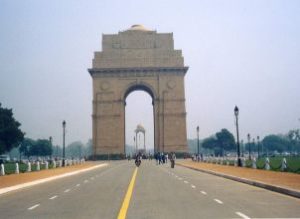
- You can have a picnic at India Gate – You can spend some time on a picnic here with friends and family, enjoying the view of India Gate.
- You can take a morning walk at India Gate – A morning walk on the Rajpath towards India Gate is a great way to start the day.
- You can take photos and selfies at India Gate – India Gate is a great place to capture photos and selfies. In the morning or evening, people are seen taking selfies here and doing photography. Many photographers are also present here, who click your photo with India Gate and provide you the photo within minutes.
- Street Food at India Gate – There are many street vendors around India Gate. where you can, eat ice cream in monsoon.
- Children’s Park at India Gate – Children’s Park nearby is a fun place for children at India Gate.
Attractions around India Gate
Daryaganj-
Daryaganj is the largest market for books in Delhi. It will take 15 minutes to reach Daryaganj from India Gate. Go to Daryaganj, Sunday Book Market on Sundays, here you will find all sorts of rare second-hand books at a very low price.
Red Fort-
You can also see the Red Fort with India Gate. Red Fort from India Gate is only 5 km away. The Red Fort was built in 1646 by Shah Jahan on the right bank of Yamuna river. Now the Red Fort is, World Heritage, people from all over the world come here to see it.
Andhra Bhawan-
Andhra Bhawan is a canteen which is only 1 km away from India Gate. If you are hungry, then there is good food available at cheap prices. It is also a good place to eat not only tourists but also local people. This is the least budget restaurant in Delhi.
Rajghat-
You can go to Rajghat after India Gate. It will take only 10 minutes to reach Rajghat from India Gate. This place is a memorial of Mahatma Gandhi. In place of Mahatma Gandhi’s cremation ground in 1948, a black marble, platform has been built. An infinite flame here is also burning.
Janpath Market-
After watching India Gate, if you want to do great and budget shopping, Janpath Market is a good option. Janpath is just 1.7 km from India Gate. Here you will find jewelry, embroidery cushions, designer bags, clothes, cashmere duplex, etc. at affordable prices.
Lodhi Garden-
It is only a 30-minute road from India Gate to Lodhi Garden. In this 90-acre garden, you will go through 15th-century buildings and tombs. This is a park where people come to spend time in the evening.
Read also: Interesting and fun facts about Gateway of India
Best time to visit India Gate
The summers and winters in Delhi are unbearable. The favorable months to visit Delhi are February to April and August to November. India Gate can be enjoyed anytime throughout the day. The night view looks breathtaking with perfect lighting. India Gate is decorated like a bride on Independence Day (15 August) or Republic Day (26 January), making the scene worth visiting.
Find India Gate On Google Map
How to reach India Gate by flight
All major international airlines of the world fly through Delhi. Indira Gandhi International Airport is located, 23 km southwest of central Delhi and the domestic terminal at Palam is 5 km from the international terminal. Airport coaches are operated from Delhi Transport Corporation to Connaught Place by the Inter-State Bus Terminus (ISBT), Kashmiri Gate and the Airlink Transport Service of Ex-Servicemen.
How to reach India Gate by train
Delhi is the hub of the Indian rail network. The city has two major railway stations in New Delhi and Old Delhi. New Delhi station, is walking distance to Connaught Place and the central Delhi station is about 7 km from Connaught Place. To go to India Gate, you can get down at Hazrat Nizamuddin Station in Delhi or New Delhi Station. The most comfortable option to reach India Gate from here is Metro. The nearest metro station from New Delhi is the Central Secretariat Metro Station, which falls on the Yellow Line. Other metro stations are Pragati Maidan, Race Course, and Barakhamba. You can take an auto-rickshaw or taxi from outside the metro station to reach India Gate. Alternatively, you can take a DTC bus from any point in the city. Buses going towards Patiala House also go towards India Gate. Tourists are not allowed to carry vehicles to the memorial. Therefore, an authorized car parking area is available for India Gate tourists near Shahjahan Road. It is about 600 meters from the monument.
How to reach India Gate by bus
Buses are available from all higher places of Uttar Pradesh, Punjab, Haryana, Himachal Pradesh, Madhya Pradesh and Rajasthan to Delhi. Delhi Transport Corporation (DTC) operates special services from railway stations to several parts of the city.
